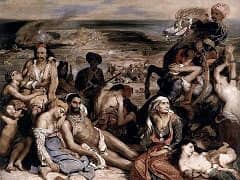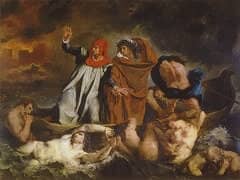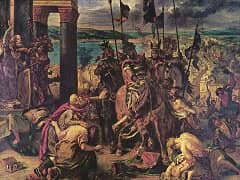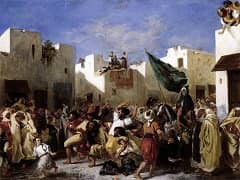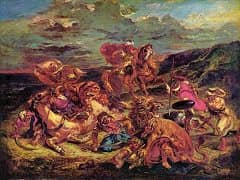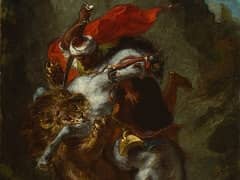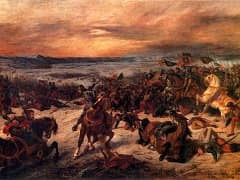Death of Sardanapalus by Eugene Delacroix
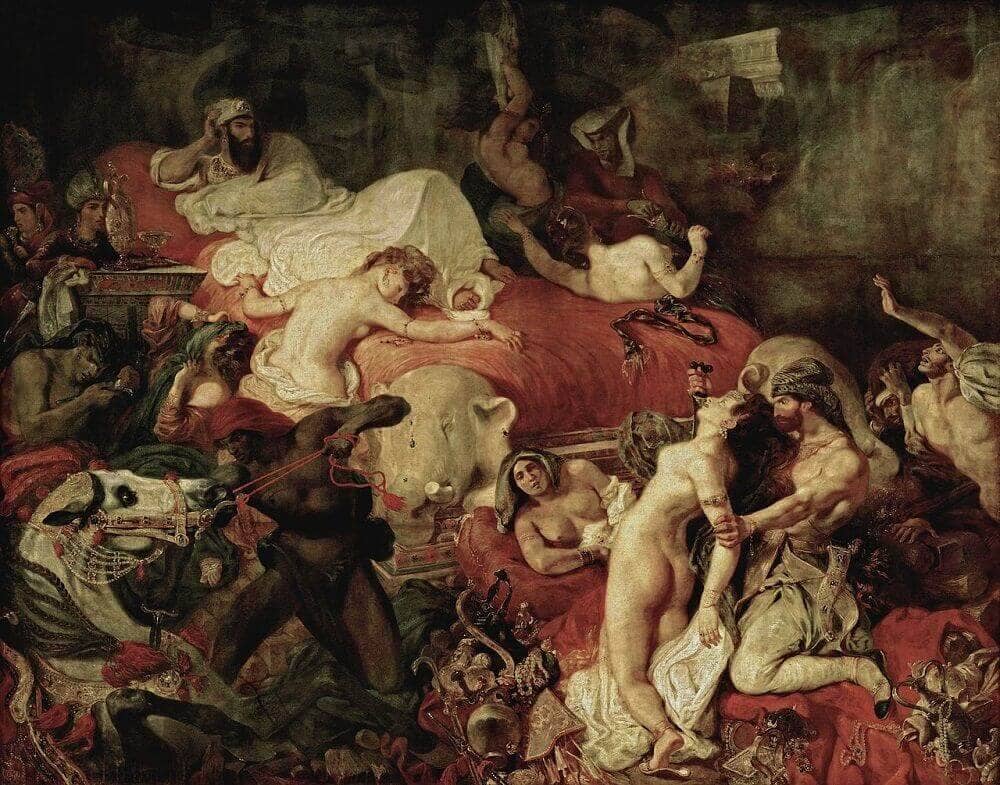
This fiercely dynamic and Romantic canvas, which Delacroix called his "Massacre No. 2," is without doubt in its violence the artist's most lyrical work. The composition, a Baroque whirlwind in
which the confusion is more apparent than real, is full of admirable forms: wild, trembling horses, luminous female bodies bent like those of Naiads by
Peter Paul Rubens, all impassively dominated by the legendary king, decked out in white on the bed where he lies in state. The sumptuous colors,
fluid as watercolor in texture, run the gamut of reds: lakes, carmines, vermilions, which, in this death scene, paradoxically bespeak life and blood. Yellows, oranges, warm browns, stand out
against a dark background crossed by the glow of blazing fires.
In the tumult of the scene, the frenzy of the gestures, the accumulation of detail, the entirely Oriental barbaric pomp and splendor, Delacroix foregoes no extravagance, and thereby in a single
stroke, it seems, frees himself forever from the excesses of Romanticism. While he may always remain, in Baudelaire's phrase, "passionately in love with passion," he will never again give such
free rein to an unbridled imagination, and will henceforth always keep his creative impulse under the control of his lucid intelligence.
The subject of this picture was long supposed to have been inspired by Byron's Sardanapalus, the tragedy in which the poet drew upon the historians of antiquity for the story of this king who
died on a funeral pyre, surrounded by his wives, his slaves, his horses, and his treasures, rather than undergo capture.
The work was almost unanimously condemned at the Salon of 1827-28, and echo of these criticisms appears in this disillusioned sentence from Delacroix to his friend Soulier:
I am annoyed with this whole Salon. They will end up by convincing me that I have made a veritable fiasco. There are those who say that this is a complete downfall, that the Death of Sardanapalus is really the death of the Romantics, since Romantics there be ... "



